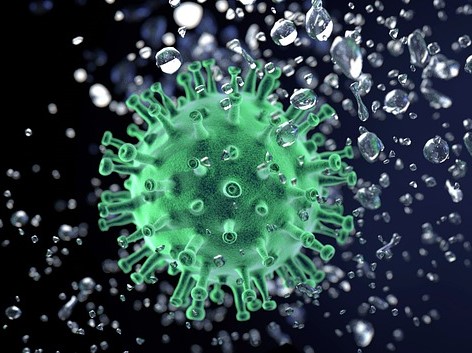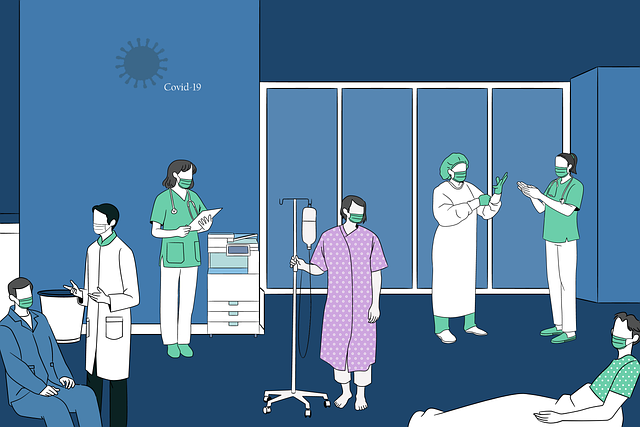Long COVID: The Impact of Post-Acute Sequelae of COVID-19 (PASC)
November 12, 2021
There is mounting evidence of the importance and seriousness of the long-term effects of COVID-19. Post-acute sequelae of SARS-CoV-2 (PASC, or “long COVID”) is characterized by persistent symptoms and/or delayed or long-term complications beyond 4 weeks from the onset of symptoms (1). Approximately 80% of individuals with a confirmed COVID-19 diagnosis continue to have COVID-19 symptoms or the emergence of new ones following acute infection (2, 3). Since COVID-19 can affect the function of multiple organs in the body, including the lungs, heart, brain, kidneys, and liver, people are experiencing a broad range of sequelae, such as neurocognitive disorders, mental health disorders, metabolic disorders, cardiovascular disorders, gastrointestinal disorders, malaise, fatigue, musculoskeletal pain, and anemia. Commonly reported symptoms include fatigue, shortness of breath, “brain fog”, sleep disorders, fevers, gastrointestinal symptoms, anxiety, and depression (4). It can be observed after asymptomatic, as well as mild or severe, COVID-19.
Recent Studies
One survey study in Long Beach, California reported higher rates of PASC among individuals aged 40–54 years, females, and those with preexisting conditions (5). However, this will require further studies by monitoring the prevalence of post-acute sequelae among larger cohorts in diverse populations. The systematic review of 57 studies comprising more than 250,000 survivors of COVID-19 has suggested that the median proportion of COVID-19 survivors experiencing at least 1 PASC was 54.0% at 1 month (short-term), 55.0% at 2 to 5 months (intermediate-term), and 54.0% at 6 or more months (long-term) (6). A recent study in the U.S. found that approximately one-third of people who had COVID-19 report persistent symptoms up to 9 months after the initial illness (7). However, the duration of PASC needs to be further determined.
Possible Causes
The reason why some patients experience PASC is uncertain. This could be partially explained by host-controlled factors that influence the outcome of the viral infection, including genetic susceptibility, age and sex of the host when infected, dose and route of infection, presence of concurrent infections, and past exposure to cross-reactive agents; overall inflammation is likely an important driver of such long-term complications (2). Recent studies have shown that long-term symptoms in some PASC patients may be related to organ or tissue injury caused by SARS-CoV-2, or associated clotting or inflammatory processes during acute COVID-19 (8).Some of the manifestations may be driven by a direct effect of the viral infection and may be explained by the persistence of the virus in some immune-privileged sites (9), but this still needs to be verified. Long-term autoantibody production might also be involved; and, in fact, several research teams have isolated a range of autoantibodies in acute COVID-19 patients (10).
Approximately 80% of individuals with a confirmed COVID-19 diagnosis continue to have COVID-19 symptoms or the emergence of new ones following acute infection.
Recent studies have shown that long-term symptoms in some PASC patients may be related to organ or tissue injury caused by SARS-CoV-2, or associated clotting or inflammatory processes during acute COVID-19.
In rare cases, some children experience multisystem inflammatory syndrome (MIS) during or immediately after SARS-CoV-2 infection. MIS can lead to post-COVID conditions if an individual continues to experience multi-organ lesions.
 Multisystem Inflammatory Syndrome (MIS)
Multisystem Inflammatory Syndrome (MIS)
In rare cases, some children experience multisystem inflammatory syndrome (MIS) during or immediately after SARS-CoV-2 infection. MIS can lead to post-COVID conditions if an individual continues to experience multi-organ lesions (11). Certainly, further research from multi-disciplinary teams are crucial to understand the causes, mechanisms, and risks of post-COVID so as to develop preventive measures. In this context, the National Institutes of Health is supporting research for an appraisal of the spectrum of recovery from SARS-CoV-2 infection across the population. This includes the underlying biological cause of these prolonged symptoms, identification of high-risk groups of individuals, the potential long-term effects of COVID-19 on women infected with SARS-CoV-2 during pregnancy, and the long-term effect of MIS in children. This will require global collaboration, including clinical surveys, detailed analysis of the clinical data, and follow-up with racially, ethnically, and demographically diverse patient populations. This approach can also be helpful in developing treatment and care systems for low- and middle-income countries.
Conclusion
The COVID-19 pandemic has created an unprecedented challenge and burden on public health. In particular, PASC is affecting individuals’ quality of life with lingering and debilitating symptoms. As of November 5, 2021, 248,467,363 cases of COVID-19 have been reported globally (12). As the pandemic goes on, more people will experience PASC. Due to the individualized nature of PASC, it will require dynamic therapeutic approaches, specifically managed care for patients by using diverse medical expertise, and frequent medical evaluations. Identification of high-risk groups of people can also help develop and provide efficient prevention and treatment strategies for those populations most in need.
References
- Nalbandian, A., Sehgal, K., Gupta, A. et al.Post-acute COVID-19 syndrome. Nat Med 27, 601–615 (2021). https://doi.org/10.1038/s41591-021-01283-z
- Lopez-Leon, S., Wegman-Ostrosky, T., Perelman, C. et al.More than 50 long-term effects of COVID-19: a systematic review and meta-analysis. Sci Rep 11, 16144 (2021). https://doi.org/10.1038/s41598-021-95565-8
- Carfi, A., Bernabei, R., Landi, F. & Gemelli Against COVID-19 Post-Acute Care Study Group. Persistent symptoms in patients after acute COVID-19. Am. Med. Assoc. 324, 603–605 (2020).
- Nasserie T, Hittle M, Goodman SN. Assessment of the frequency and variety of persistent symptoms among patients with COVID-19: a systematic review. JAMA Netw Open. 2021;4(5):e2111417-e2111417. doi:1001/jamanetworkopen.2021.11417
- Yomogida K, Zhu S, Rubino F, Figueroa W, Balanji N, Holman E. Post-Acute Sequelae of SARS-CoV-2 Infection Among Adults Aged ≥18 Years — Long Beach, California, April 1–December 10, 2020. MMWR Morb Mortal Wkly Rep 2021;70:1274–1277. DOI: http://dx.doi.org/10.15585/mmwr.mm7037a2
- Groff D, Sun A, Ssentongo AE, et al. Short-term and Long-term Rates of Postacute Sequelae of SARS-CoV-2 Infection: A Systematic Review. JAMA Netw Open.2021;4(10):e2128568. doi:10.1001/jamanetworkopen.2021.28568.
- Logue JK, Franko NM, McCulloch DJ, et al. Sequelae in Adults at 6 Months After COVID-19 Infection. JAMA Netw Open.2021;4(2):e210830. doi:10.1001/jamanetworkopen.2021.0830.
- Proal Amy D., VanElzakker Michael B. Long COVID or Post-acute sequelae of COVID-19 (PASC): an overview of biological factors that may contribute to persistent symptoms. Front. Microbiol. 2021, 1494, https://www.frontiersin.org/article/10.3389/fmicb.2021.698169
- Del Rio, C., Collins, L. F., and Malani, P. (2020). Long-term health consequences of COVID-19. Am. Med. Assoc.324, 1723–1724. doi: 10.1001/jama.2020.19719.
- Wang, E. Y., Mao, T., Klein, J., Dai, Y., Huck, J. D., Liu, F., et al. (2020). Diverse functional autoantibodies in patients with COVID-19. medRxiv doi: 10.1101/2020.12.10.20247205
- Davies P, du Pré P, Lillie J, Kanthimathinathan HK. One-Year Outcomes of Critical Care Patients Post–COVID-19 Multisystem Inflammatory Syndrome in Children. JAMA Pediatr.Published online August 30, 2021. doi:10.1001/jamapediatrics.2021.2993
- WHO Coronavirus (COVID-19) Dashboard. https://covid19.who.int

